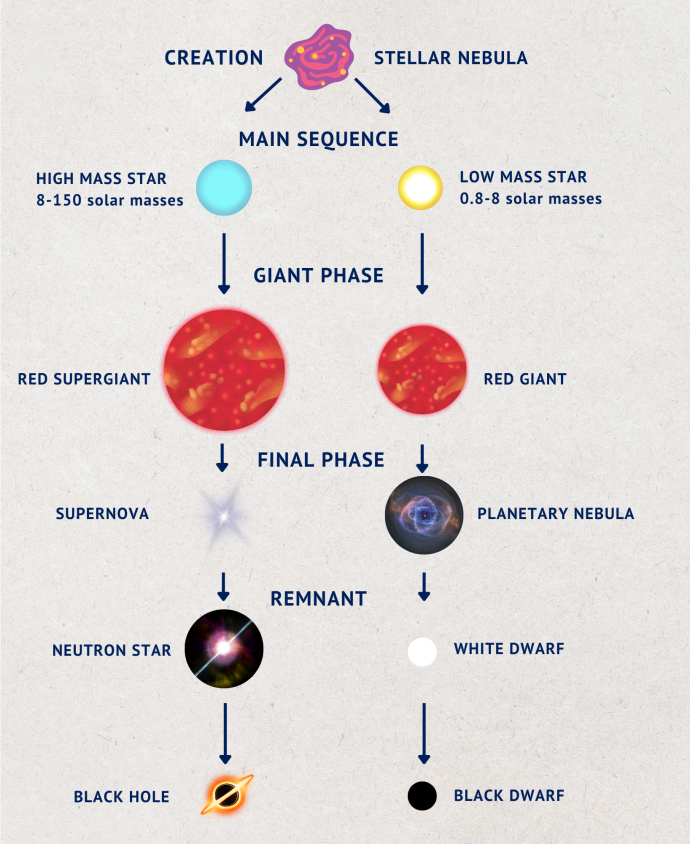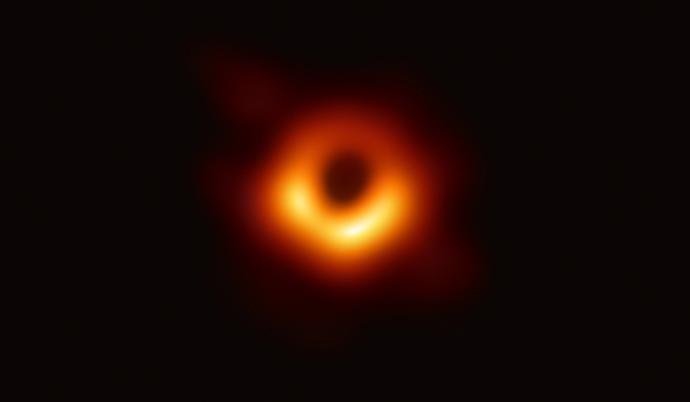Stellar Evolution
All stars form in nebulae, huge clouds of gas and dust.
Though they shine for thousands of years, stars do not last forever. The changes that occur in a star over time and the final stage of its life depends on a star's size.

Blackholes
Black holes are very strange objects. They are made during supernova explosions. These take place when very massive stars come to the end of their lives.

Tana Joseph
Early Life
Tana grew up in Cape Town, South Africa as the daughter of two science teachers. When she was 11 years old, the newspaper printed images from the Hubble Space Telescope on their front page. The pictures inspired Tana to become an astronomer. She went on to study physics and astronomy at university. After receiving a scholarship, she gained her PhD in the UK in 2013.
Year born: 1984
Research Areas: Extragalactic X-ray Binaries, Radio Astronomy
"Science isn’t done until it is communicated."
Pair the Stages of a Star
Though they shine for many thousands, and even millions of years, stars do not last for ever. They ignite, burn, and then run out of fuel and go out.
Can you match the images of each stage of a star's existence to the correct description?
Karl Schwarzschild
Year born: 1873
Research Areas: Relativity, Black Holes, Quantum Theory, Stars, Comets
"Mathematics, physics, chemistry, astronomy, march in one front."
Stephen Hawking
Early Life
Stephen was born in 1942 in Oxford, UK during World War II. He decided that he wanted to study mathematics at university, but his father wanted him to choose medicine instead. He was accepted into University College Oxford but because they did not offer a degree in mathematics, Stephen chose to study physics. After three years (and, in his words, "not very much work"), he graduated with a first-class honours degree in natural sciences. From there, he went on to study cosmology at Cambridge University.
Year born: 1942
Research Areas: Cosmology, Theoretical Physics
"All my life, I have been fascinated by the big questions that face us, and have tried to find scientific answers to them."
Subrahmanyan Chandrasekhar
Early Life
Subrahmanyan Chandrasekhar (known as Chandra) grew up in Lorhre, British India (now Pakistan). Chandra came from an academic family. His uncle was a physicist and Nobel Laureate and his mother loved learning. She encouraged young Chandra to be curious. His mother and father taught him at home until he was 12. Chandra got a BSc in physics in 1930 from Presidency College, Madras. He then won a scholarship to study for a postgraduate degree at Trinity College, University of Cambridge, UK. He received a PhD in 1933.
Year born: 1910
Research Areas: Stellar Evolution, Black Holes
"My motive has not been to solve a single problem, but to acquire a perspective of an entire area"
Identify the Nebula
The word nebula is used to talk about any dusty, fuzzy objects in space but they can be very different things! Can you classify each image into its proper category?
